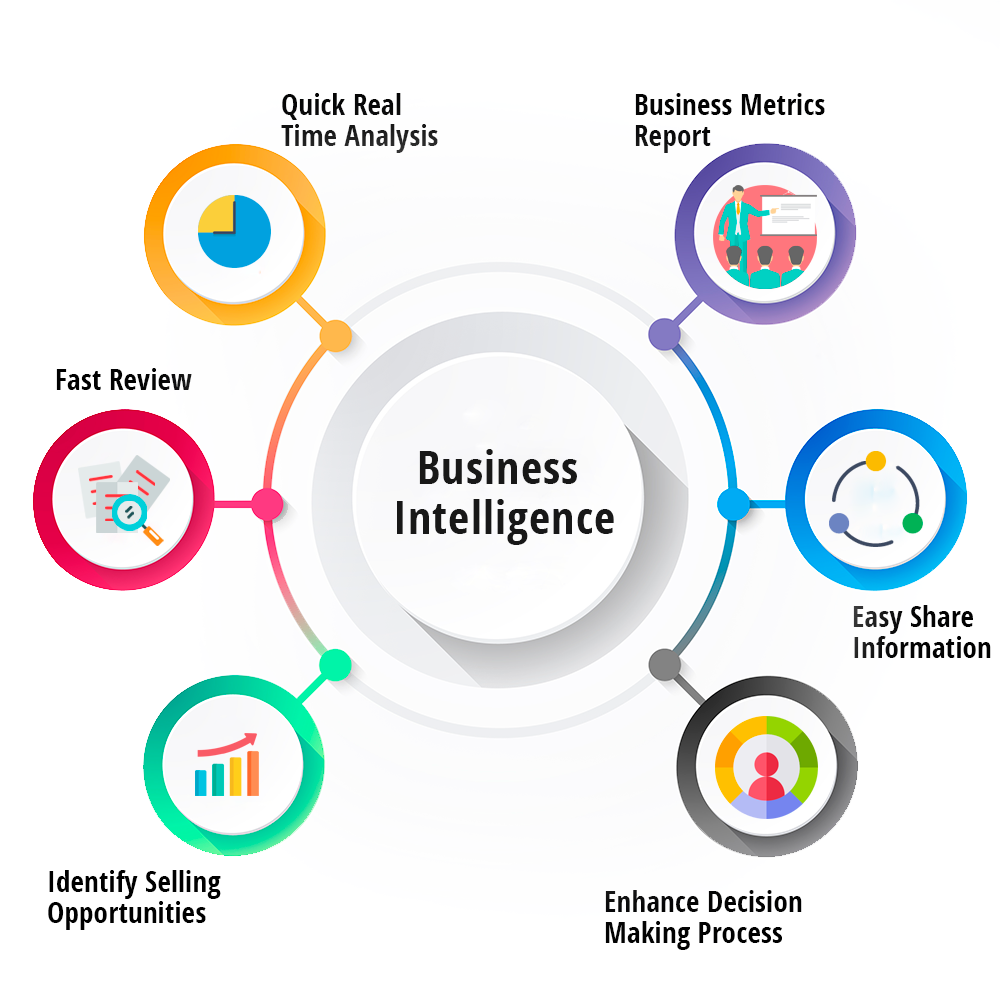
Business Intelligence Software: Your Key to Data-Driven Success
In today’s fast-paced and competitive business landscape, making informed decisions is crucial for driving growth, improving efficiency, and staying ahead of the competition. To achieve this, companies rely on data-driven insights, and that’s where Business Intelligence (BI) software comes in. In this article, we’ll explore the world of Business Intelligence software, its benefits, key features, and how it can help your organization achieve data-driven success.
What is Business Intelligence Software?
Business Intelligence software is a set of tools and technologies that enable organizations to transform raw data into actionable insights, facilitating better decision-making. It encompasses a range of functionalities, including data mining, reporting, analytics, and visualization, to help businesses optimize their operations, identify new opportunities, and mitigate risks.
BI software is designed to support the entire decision-making process, from data collection and integration to analysis and visualization. By providing a unified view of an organization’s data, BI software helps stakeholders to identify trends, patterns, and correlations that might not be apparent through traditional reporting methods.
Benefits of Business Intelligence Software
The benefits of implementing Business Intelligence software are numerous and significant. Some of the most notable advantages include:
- Improved Decision-Making: BI software provides users with accurate and timely insights, enabling them to make informed decisions that drive business growth.
- Enhanced Efficiency: Automated reporting and analytics capabilities reduce manual efforts, freeing up staff to focus on higher-value tasks.
- Increased Revenue: By identifying new opportunities and optimizing existing processes, businesses can boost revenue and improve profitability.
- Better Risk Management: BI software helps organizations to identify potential risks and develop strategies to mitigate them.
- Competitive Advantage: Companies that adopt BI software can gain a competitive edge by making data-driven decisions and responding quickly to market changes.
Key Features of Business Intelligence Software
When evaluating BI software, there are several key features to consider:
- Data Integration: The ability to connect to multiple data sources, including databases, spreadsheets, and cloud applications.
- Data Visualization: Interactive dashboards and reports that facilitate easy understanding of complex data.
- Reporting and Analytics: Capabilities for creating ad-hoc reports, performing predictive analytics, and conducting what-if analysis.
- MobileAccessibility: Access to BI software and insights on-the-go, via mobile devices.
- Security and Governance: Robust security measures, such as encryption, access controls, and auditing, to ensure data integrity and compliance.
- Scalability and Performance: The ability to handle large volumes of data and scale to meet growing business needs.
- User Experience: Intuitive interfaces and minimal training requirements to promote widespread adoption.
Types of Business Intelligence Software
The BI software market offers a range of solutions, catering to diverse business needs and budgets. Some of the most common types of BI software include:
- Self-Service BI: Designed for non-technical users, self-service BI tools enable individuals to create reports and perform analysis without IT support.
- Enterprise BI: Comprehensive platforms that support large-scale deployments, often with advanced features and customization options.
- Cloud BI: Cloud-based solutions that provide flexible, on-demand access to BI capabilities, reducing infrastructure and maintenance costs.
- Open-Source BI: Community-driven projects that offer free or low-cost alternatives to commercial BI software.
Implementation and Best Practices
To ensure successful implementation and maximize the benefits of BI software, follow these best practices:
- Define Clear Goals and Objectives: Establish specific business outcomes and metrics to measure the effectiveness of your BI initiative.
- Assess Data Quality and Availability: Evaluate the accuracy, completeness, and relevance of your data to ensure reliable insights.
- Choose the Right Tool: Select a BI software that aligns with your organization’s needs, skills, and budget.
- Develop a Change Management Plan: Communicate the benefits and value of BI software to stakeholders, addressing potential resistance to change.
- Provide Training and Support: Offer ongoing training and resources to ensure users can effectively utilize the BI software.
Real-World Applications of Business Intelligence Software
Business Intelligence software has been successfully applied across various industries, including:
- Retail: Analyzing customer behavior, optimizing inventory management, and predicting sales trends.
- Finance: Identifying high-risk transactions, detecting fraud, and optimizing investment portfolios.
- Healthcare: Improving patient outcomes, streamlining clinical workflows, and reducing costs.
- Manufacturing: Optimizing supply chain operations, predicting equipment failures, and improving product quality.
Conclusion
Business Intelligence software is a powerful tool for organizations seeking to drive growth, improve efficiency, and make informed decisions. By providing a unified view of an organization’s data, BI software enables stakeholders to identify trends, patterns, and correlations that might not be apparent through traditional reporting methods. With its numerous benefits, key features, and real-world applications, BI software is an essential component of any data-driven business strategy. As the business landscape continues to evolve, the importance of Business Intelligence software will only continue to grow, helping organizations to stay ahead of the competition and achieve sustained success.
Closure
Thus, we hope this article has provided valuable insights into Business Intelligence Software: Your Key to Data-Driven Success. We hope you find this article informative and beneficial. See you in our next article!


